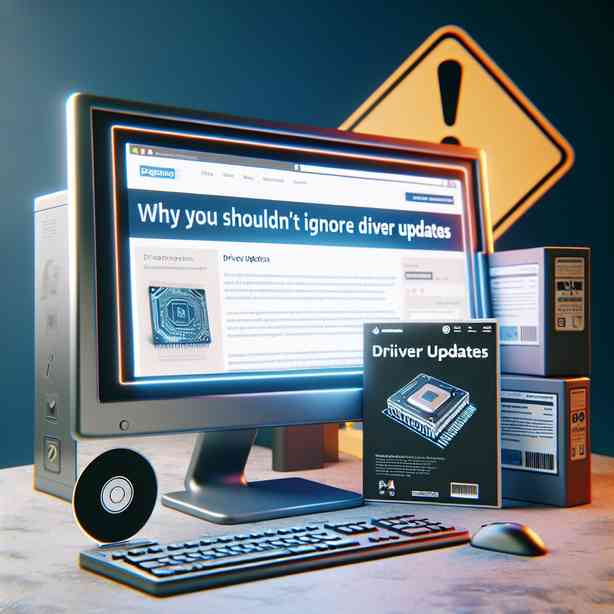
In the rapidly evolving world of technology, one vital aspect often overlooked by users is the importance of keeping drivers updated. Drivers are the software that enables communication between your operating system and the hardware components of your computer, such as the graphics card, printer, or network adapter. Neglecting these updates can lead to a range of problems, from diminished performance to security vulnerabilities. In this comprehensive guide, we will explore why you should prioritize driver updates and provide insight into how to effectively manage them.
To begin with, outdated drivers can significantly impact the overall performance of your computer. Hardware manufacturers frequently release driver updates to optimize performance and resolve issues that have been detected since the previous version. With each update, improvements are made that can enhance the functionality of your devices, enabling them to operate at peak efficiency. For instance, updating your graphics driver can lead to enhanced gaming performance, better graphics rendering, and overall smoother experiences when running graphics-intensive applications.
Moreover, updated drivers are crucial for compatibility with new software and applications. As operating systems are updated and new versions of programs are released, the hardware must adapt to these changes. If a driver is not updated accordingly, it can result in software crashes, hardware malfunctions, or devices failing to work altogether. This is particularly true for gamers and creative professionals who rely on the latest software for their projects. Keeping drivers up to date ensures that you can take full advantage of the tools and technologies at your disposal.
Security is another significant consideration when discussing driver updates. Cybersecurity threats are evolving constantly, and outdated drivers can expose your system to vulnerabilities that hackers can exploit. Manufacturers often release driver updates that patch security holes to protect against these threats. When you ignore these updates, you are allowing your system to remain susceptible to attacks. For instance, an outdated network adapter driver could potentially allow unauthorized access to your computer. By regularly updating drivers, you can maintain a robust defense against potential threats.
Aside from performance and security, another reason not to ignore driver updates is to reduce the risk of system instability. An outdated or faulty driver can cause your system to exhibit erratic behavior, such as crashes, freezes, or unexpected restarts. These issues can severely disrupt your workflow or gaming experiences. In some cases, hardware can even become non-functional if the driver associated with it is outdated. By regularly checking for and installing updates, you can prevent these frustrating occurrences from arising and maintain a stable and reliable computing experience.
It is also worth noting that updating drivers can enhance the functionality of hardware components. Newer drivers may include features or improvements that were not available with the previous versions. For instance, an updated printer driver might introduce new printing modes, enhance color accuracy, or add support for different paper sizes. Similarly, updated graphics card drivers often come with optimizations that can improve rendering speed and introduce support for new technologies such as ray tracing. By keeping your drivers up to date, you can unlock the full potential of your hardware.
Now that we’ve established why driver updates are essential, let’s discuss how to manage them effectively. Many users may be under the impression that updating drivers is a tedious process. However, several software solutions can automate this task, making it easier than ever to keep your drivers current. For example, device management tools can scan your system and notify you of available updates, allowing you to download and install them with just a few clicks.
Additionally, you can go directly to the manufacturer’s website for your hardware components to check for updates. Most reputable manufacturers provide dedicated support sections where you can download the latest drivers for their products. This method ensures that you are getting the most reliable and compatible drivers tailored specifically for your hardware. It is good practice to check for driver updates regularly, at least once a month, to stay ahead of potential issues.
It is equally important to be cautious when updating drivers. While the majority of updates are beneficial, there can be exceptions, where a new driver version might introduce bugs or compatibility issues. It is prudent to read user reviews or forums discussing the updates before installation, particularly for critical components. In some cases, having a rollback option prepared could save you a lot of trouble if an update doesn’t perform as expected.
In some instances, you might find that certain drivers are automatically managed by your operating system, such as Windows Update for Windows users. While this feature is useful, it doesn’t always guarantee that your drivers are the most up-to-date versions. Therefore, taking the initiative to verify driver status through external software or manufacturer databases can further ensure optimal performance.
In conclusion, never underestimate the significance of driver updates in the maintenance of your computer system. Keeping your drivers current not only preserves the performance and functionality of your hardware but also fortifies your system against potential security threats. The importance of enhancing your computing experience with the latest technology is undeniable; thus, proactive management of driver updates should be a regular part of your digital routine. By investing a little time and effort into keeping your drivers up to date, you can enjoy a smooth, efficient, and secure computing experience. So, take action today and make driver updates a priority, ensuring your system runs as intended and remains protected against the ever-changing landscape of technology.


